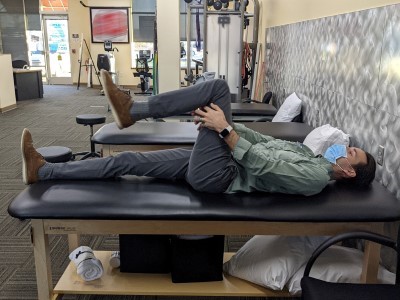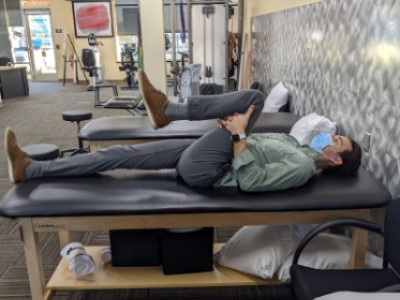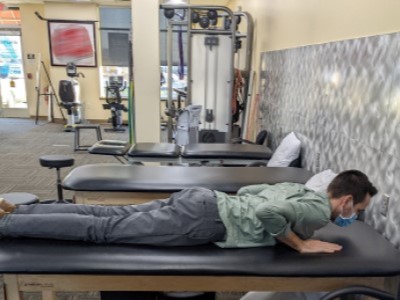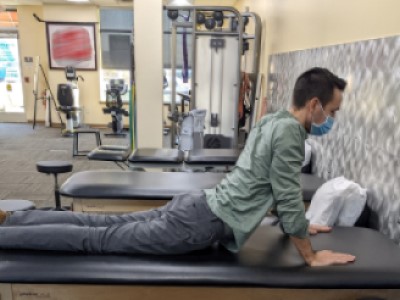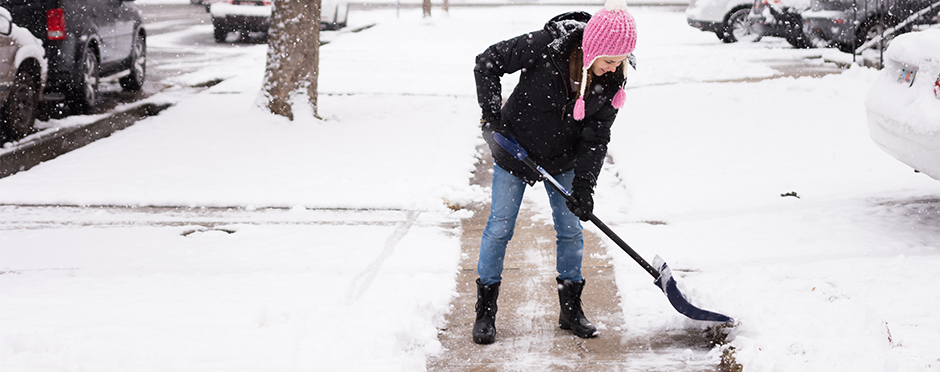
4 Exercises for Back Pain Relief After Snow Shoveling
Leave a CommentWinter is coming. With that comes everybody’s least favorite piece of yard work – snow shoveling. It’s the one chore almost nobody loves but must be done. Unfortunately, it is one of the most strenuous chores we must complete and causes roughly 11,500 injuries per year.1 The most common are soft tissue injuries (strains, cramping, pulled muscles) and lower back injuries. Lower back injuries account for almost 35% of total snow shovel-related injuries.1
Snow shoveling requires a lot of bending, pushing, lifting, and twisting, so it’s no wonder why it can result in so many back injuries. The big question that needs to be answered, is what do you do if you end up injuring your back? The snow is likely to keep coming, and the snow shovel won’t move the snow by itself. Ice, rest, and over-the-counter pain relievers can be helpful but may not be enough to get you back outside to finish the job. Here are some easy exercises you can do to relieve your pain and improve your mobility so you can move those big piles of snow.
1. Knee To Chest
- Lay on your back with your knees bent.
- Grab onto the front or back of your knee and pull your knee towards your chest until a gentle stretch is felt.
- Make sure to breathe and hold for 20-30 seconds in a pain-free range.
- Repeat 3 to 5 times on each side.
2. Open Books
- Begin laying on your side (it does not matter which side because you will do both sides).
- Keep your top hand by your top ear. Have your knees stacked and bent up to a comfortable position.
- Keeping your knees together and on the surface, rotate your elbow and turn your head to follow it until a gentle stretch is felt, then return to the starting position.
- Inhale as you rotate away and exhale as you rotate back.
- Perform 20 to 30 repetitions on each side.
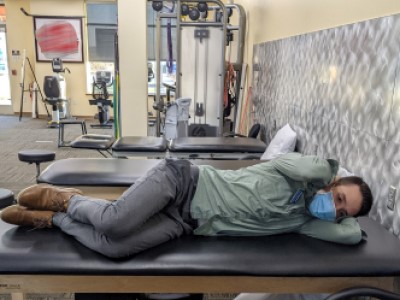
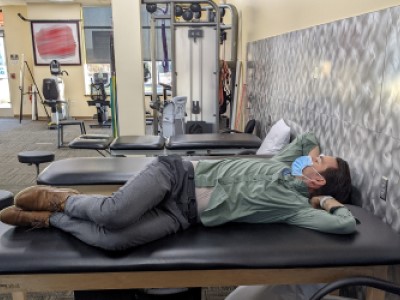
3. Prone Press Up
- Begin laying on your stomach with your hands pressed into the ground.
- Keeping your back relaxed, press your hands into the surface and press your chest off the ground through a pain-free range.
- Inhale as your press up and exhale as you lower yourself back down.
- Repeat 20 to 30 times.
4. Quadruped Rocking
- Begin on hands and knees.
- Slowly rock your hips back towards your feet as you push with your arms. It helps to take a deep breath in as your rock back and exhale as you return to the starting position.
- Try 20-30 repetitions in a pain-minimal range.
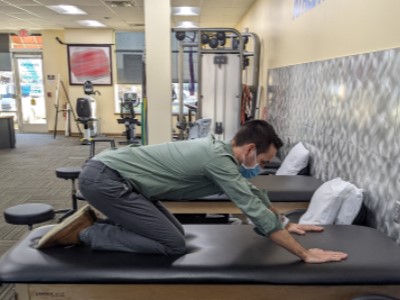
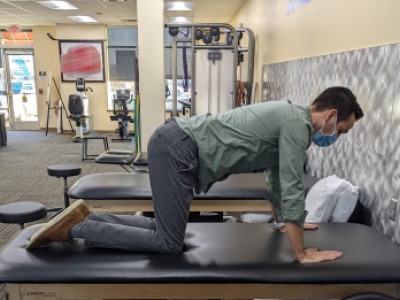
In Pain? Start Here
These exercises will assist with many of the movements required to shovel snow and should not aggravate your symptoms. If these don’t help, your next best step is to call your local Athletico and set up a Free Assessment to see how physical therapy can help you recover and get back to moving those piles of snow. Free Assessments are available in-clinic and virtually through our Telehealth platform.
The Athletico blog is an educational resource written by Athletico employees. Athletico bloggers are licensed professionals who abide by the code of ethics outlined by their respective professional associations. The content published in blog posts represents the opinion of the individual author based on their expertise and experience. The content provided in this blog is for informational purposes only, does not constitute medical advice and should not be relied on for making personal health decisions.
Reference:
1. Daniel S. Watson, Brenda J. Shields, Gary A. Smith. Snow shovel–related injuries and medical emergencies treated in US EDs, 1990 to 2006. The American Journal of Emergency Medicine,Volume 29, Issue 1, 2011, Pages 11-17. ISSN 0735-6757. https://doi.org/10.1016/j.ajem.2009.07.003.
